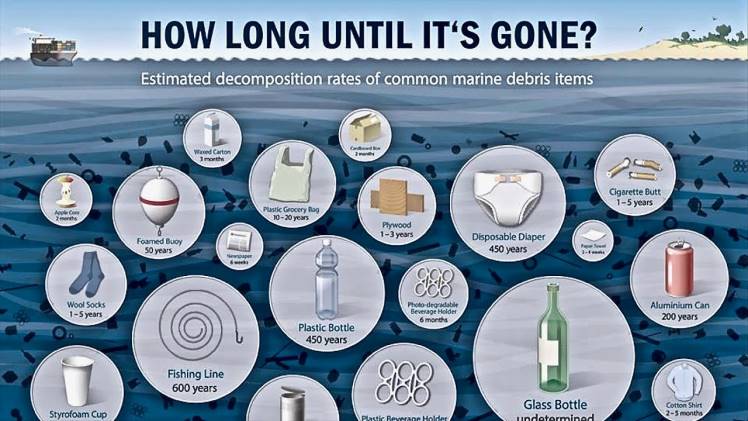How long does it take for cardboard to completely decompose?

Cardboard is a widely used material that plays a significant role in packaging, shipping, and everyday life. It is commonly used for boxes, cartons, and other packaging materials due to its durability, versatility, and cost-effectiveness.
However, as the world continues to prioritize sustainability and environmental consciousness, understanding the lifespan of materials like cardboard and their impact on the environment is crucial.
In this article, we will explore the decomposition process of cardboard and answer the question: How long does it take for cardboard to completely decompose?
How long does it take for cardboard to completely decompose?
Cardboard is primarily made from wood pulp, which consists of cellulose fibers. These fibers provide the structural integrity and strength of the material.
While cardboard is biodegradable, the actual time it takes to decompose depends on various factors such as the thickness of the cardboard, environmental conditions, and the presence of microorganisms.
On average, it can take anywhere from two months to several years for cardboard to decompose completely. However, it is important to note that the decomposition process occurs in stages.
Initially, the outer layers of cardboard start to break down, and as time progresses, the cellulose fibers begin to deteriorate. The presence of moisture and oxygen accelerates this process.
Factors which affect how long does it take for cardboard to completely decompose
The decomposition process of cardboard is influenced by several factors, including environmental conditions, cardboard composition, and waste management practices.
By examining these factors, we can gain a deeper understanding of the timeline for cardboard decomposition and its impact on the environment.
- Environmental Conditions
The environment plays a significant role in determining the decomposition rate of cardboard. Moisture, temperature, and exposure to oxygen are crucial factors.
In a humid environment, cardboard is likely to decompose faster due to increased microbial activity.
Similarly, higher temperatures speed up chemical reactions, including the breakdown of organic materials like cardboard.
On the other hand, extremely dry or cold conditions can slow down the decomposition process significantly.
- Cardboard Composition
The composition of cardboard influences its decomposition rate. Cardboard is typically made from paper fibers derived from wood pulp.
The type and quality of the fibers used can affect decomposition. Cardboard made from virgin fibers takes longer to decompose compared to cardboard made from recycled fibers.
This is because virgin fibers undergo more extensive processing and have higher lignin content, which is resistant to decomposition.
Recycled cardboard fibers, being less processed and containing fewer lignin compounds, break down more easily.
- Thickness and Structure
The thickness and structure of cardboard also affect its decomposition time. Thicker cardboard takes longer to break down compared to thinner cardboard sheets.
Similarly, cardboard boxes with complex structures, such as those with multiple layers or coated with plastic or wax, may decompose more slowly.
These additional layers can act as barriers, hindering microbial activity and slowing down the overall decomposition process.
- Waste Management Practices
Proper waste management practices play a crucial role in determining how long it takes for cardboard to decompose.
When cardboard is disposed of in landfills, the decomposition process is significantly slowed down due to the lack of oxygen and the compression of waste materials.
In these conditions, cardboard can take years or even decades to decompose fully. Conversely, when cardboard is recycled, it can be broken down and turned into new sustainable products more quickly, reducing the environmental impact and the time required for decomposition.
- Microbial Activity
Microorganisms, such as bacteria and fungi, are key players in the decomposition of organic materials, including cardboard.
These microorganisms break down the cellulose and lignin present in cardboard through enzymatic reactions.
The presence of a diverse microbial community and favorable conditions for their growth, such as moisture and warmth, can expedite the decomposition process.
In contrast, if the cardboard is stored in dry or cold conditions, microbial activity may be limited, resulting in a slower decomposition rate.
- Exposure to Sunlight
Exposure to sunlight can also affect the decomposition of cardboard. Ultraviolet (UV) radiation from the sun can break down the molecular bonds in the cardboard’s fibers, accelerating the degradation process.
However, prolonged exposure to sunlight can also cause the cardboard to become brittle and disintegrate into smaller pieces, which may persist in the environment for longer periods before complete decomposition occurs.
- Mechanical Disruption
Mechanical disruption, such as shredding or tearing cardboard into smaller pieces, can increase the surface area available for microbial activity and chemical breakdown.
Smaller cardboard particles are more accessible to microorganisms, facilitating faster decomposition.
Therefore, if cardboard is mechanically disrupted, either through intentional actions or natural processes like weathering, it can enhance the decomposition rate.
- pH and Soil Composition
If cardboard is composted or buried in the soil, the pH and composition of the soil can impact decomposition.
Microorganisms involved in decomposition thrive in slightly acidic to neutral pH conditions. Soil that is too acidic or alkaline may hinder microbial activity and slow down decomposition.
Additionally, the presence of organic matter and nutrients in the soil can support microbial growth and enhance the breakdown of cardboard.
- Overall Waste Management System
The efficiency of the waste management system in place also affects the decomposition time of cardboard.
In regions with robust recycling programs and composting facilities, cardboard is more likely to be diverted from landfills and undergo processes that facilitate its decomposition.
Conversely, in areas with limited recycling infrastructure and inadequate waste management practices, cardboard may end up in landfills where decomposition is significantly delayed.
- Other Factors
Several other factors can affect the decomposition time of cardboard. For instance, the presence of chemicals, such as inks, dyes, or coatings, can slow down the process.
Some inks and coatings contain substances that are resistant to microbial activity and natural degradation processes.
Furthermore, the presence of pests, such as termites or fungi, can also accelerate the decomposition of cardboard by breaking down its cellulose fibers.
Final words
It is worth mentioning that recycling cardboard can significantly reduce its environmental impact.
When cardboard is recycled, it undergoes a process where it is broken down into fibers and then used to create new cardboard products.
Recycling not only extends the lifespan of the material but also reduces the need for fresh raw materials and the associated environmental consequences.
The time it takes for cardboard to completely decompose can vary depending on several factors.
On average, it can take anywhere from two months to several years, with optimal conditions in composting systems leading to faster decomposition.
Recycling cardboard is an excellent way to reduce its environmental impact and contribute to eco-friendly practices.
As we continue to prioritize environmental sustainability, understanding the lifespan and decomposition process of materials like cardboard is essential for making informed choices about waste management and packaging materials.




